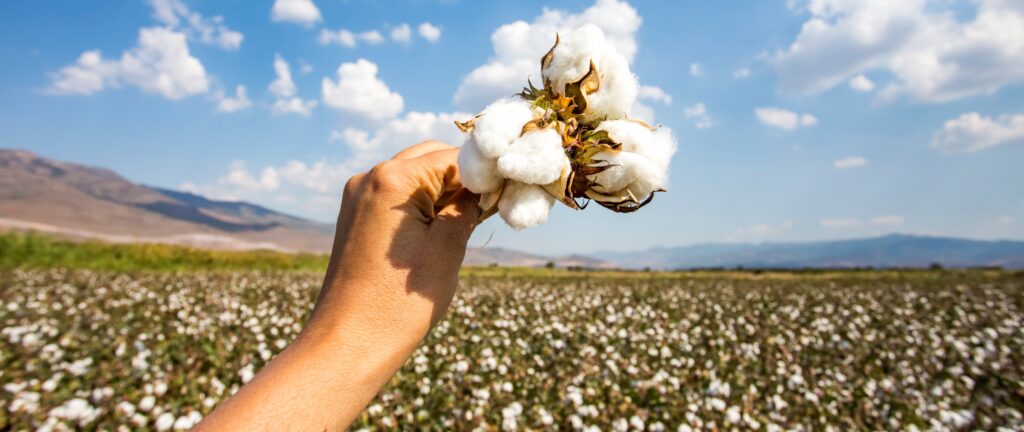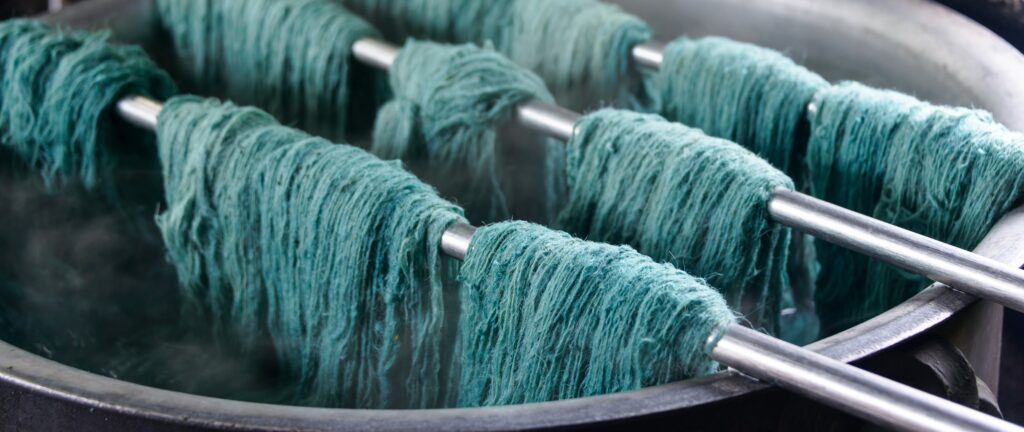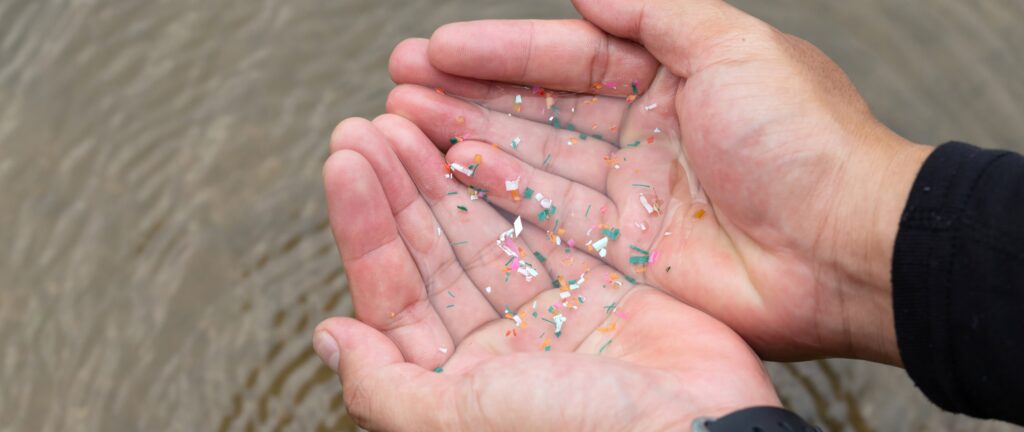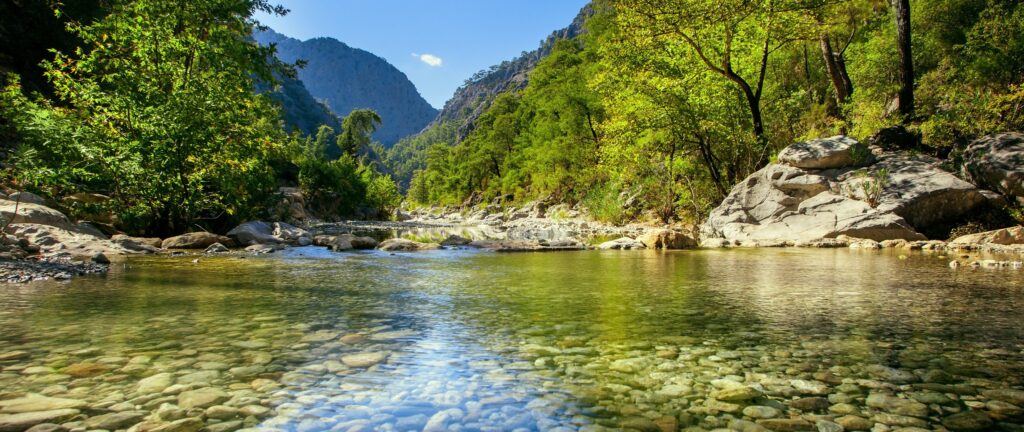The textile industry is one of the biggest water users and polluters—here’s what we can do about it
When you live in the American West as we do, wildfires and water shortages are an unfortunate reality. Almost every summer there are fires in our home region of Southern Oregon and Northern California, and we are reminded of the delicate fragility of our home ecology and the power of Nature’s elements. We’ve been in a decades-long drought with no signs of letting up, so we’ve all had to adjust to this rhythm.
The textile industry is one of the world’s biggest consumers and polluters of water, using an estimated 79 to 93 billion cubic meters of water per year. This is roughly 4% of the world’s freshwater extraction, which is startling given that around 2.7 billion people experience water scarcity. This water includes that used for crops like cotton and the water used for processing and dyeing fabrics. This doesn’t take into account the water needed to wash the clothing—that’s another 20 billion cubic meters per year.
Given all of this, water conservation is something very much on our minds. So let’s learn more about the issue and what we can all do to help.

Water Conservation at the Start
It begins at the fiber level. For our purposes, we’ll be focusing on wool and cotton since those are what we primarily use, but it’s important to note that synthetic fibers are burdensome on water usage in the production and processing stages, while being even more of a problem with pollution.
In the case of cotton, it is a notoriously water intensive crop and it grows best in drier climates where water can be harder to come by. It requires roughly 1,320 gallons of water to grow a pound of cotton—equivalent to 650 gallons for one t-shirt. There is some evidence to suggest that organic cotton uses less water than conventionally grown cotton, but this data has been disputed. It does make sense, however, that if someone is focusing on growing organic cotton that they are also taking water conservation into consideration in other ways that align with land stewardship principles. Plus, with no pesticides or chemical fertilizers, there is much less water pollution.
For wool, water usage includes the water needed for the sheep and how the pasture lands are managed. We use both organic wool and a regionally-sourced domestic wool called EcoWool® in our products. A large amount of our EcoWool comes from an amazing ranch on the Southern Oregon coast run for four generations by the Wahl family. They are true stewards of the land and manage their pastures and lands in a way that benefits wildlife, the ecosystem, the sheep, and the humans who care for them.

Water Conservation During the Process
A large amount of water is used during fabric processing, and a lot of textile industry water pollution occurs during this stage. It’s estimated that the textile industry is responsible for 20% of all industrial water pollution, and this includes some seriously toxic chemicals.
Even for natural fibers like cotton and wool, processing and dying creates pollution. Not ours! We use all-natural wool cleaned only with gentle, biodegradable soap, and undyed organic cotton grown with care. It’s about as pure and natural as you can get.
And we sell other bedding such as organic cotton duvet covers and sheets by Coyuchi, who dyes their fabrics with care in an Earth-friendly way.

Water Conservation at End Use
And then there’s the laundry…How much water your machine uses will vary by make and model, but today’s washing machines tend to be much more water efficient than in years past. More recent models use around 13 gallons per load, with older models clocking in around 40, so if you haven’t upgraded in a while, it’s definitely worth the investment.
Then, to lower your household’s contributions to water pollution, be sure to use an all-natural, biodegradable laundry detergent and consider adding on a water filter to catch microplastics from your clothing. We’re hearing a lot more about microplastic pollution, and it’s a major problem in our waterways and oceans. You can also help avoid this by purchasing only natural fibers which break down much quicker and with less impact to ecosystems.
And when it comes to caring for wool, that’s easy! It really only requires spot cleaning as needed and some sunshine once or twice a year—no water required.
Let’s explore what else we can do to help.
More Tips for Water Conservation
- Buy quality. As they say, “By once, cry once.” You may pay more for quality, but it will far outlast anything cheaper and you’ll treasure it daily. This goes for clothing and home textiles.
- Buy natural fibers. For clothes and bedding, keep it real.
- Buy second-hand clothing. Keeping perfectly good clothing circulating and living its lifespan to the fullest is a great way to help.
- Prolong clothing life. Wash less often, wash by hand, remove stains immediately, air dry, and mend as necessary.
- Support sustainable textile brands. Don’t buy fast fashion or the latest trends that will look outdated in 6 months.
- Do your research. Just as we know to read food labels now, get good at looking for labels and certifications such as fair trade, organic, recycled, or other initiatives.

Water Conservation Needs All of Us
It’s very easy to take water for granted in our country—we just turn on the faucet and there it is! So much so, that we flush perfectly drinkable water down the drain. It’s startling to imagine how much water is wasted, and then we return that favor by returning polluted water to the Earth.
Luckily, the textile industry is having to address these issues, and with some knowledge, we can help out in our own ways too. It’s part of why we do what we do, and we hope you can appreciate the difference.
If you’d like to learn more about sustainability and textiles, check out these related Counting Sheep blog posts:
- A Global Tale of Fast Fashion
- Reusable Paper Towels for the Zero Waste Mission
- From Sheep to Sleep: All About EcoWool
- How to Wash Your Wool Items
Thanks for stopping in to read about an important issue close to our heart. There’s more where that came from on our Instagram page, so follow us there. And if you don’t already receive our fabulous Ewe’s Letter, sign up on the form below, and you’ll automatically receive some Dream Points for $50 off your next purchase of $250 or more. Until we meet again, sweet dreams!

